
Introduction
It's that time of the year again, it's time for the annual Dakar Rally.
As you may know, the Dakar Rally used to be called the Paris-Dakar Rally. Every year the race would start in the French capital, and the finish was in the capital city of Senegal, Dakar. At some point amendments to the route were done, for instance, in 1992 the race finished much further south, in Cape Town, South Africa. The edition of 1994 saw the racers finish in Paris, and in 1997 the race was held solely on the African continent for the first time in its history. It was then when the name was changed to the Dakar Rally.
For security reasons, the 2008 Dakar Rally was canceled, there was an alternative race being held instead, partially in Romania and partially in Hungary. From 2009 onwards the race has been moved to South America and has been there ever since. Despite not visiting Dakar anymore, the organizers ASO (also organizer of the Tour de France) never felt the need to change the name of the event.
For a detailed view on the history of the Dakar Rally, I recommend you to check Wikipedia.
What makes the Dakar Rally so special, is that this is considered to be the ultimate off-road experience, much more than the regular rallies throughout the season. During the Dakar Rally participants have to cross real sand dunes, large pools of mud, and basically, everything that is removed for security reasons from other racing tracks. The format is like it is in the Tour de France, times will be calculated for every stage into an overall ranking. The winner will be the individual or team who spent the least time reaching the finish. Participants can choose from five categories, cars, motorbikes, quads, SxS vehicles, and trucks. The addition of the SxS vehicles is new this year. Let's not forget that the Dakar Rally is dangerous. Over 90 people have died throughout the history of the event, that number includes both riders, fans watching the races, as well as citizens accidentally being on the wrong spot at the wrong time. One of them, Thierry Sabine, the founder of the race. He died in 1986 during an unexpected sandstorm in Mali, when the helicopter in which he followed the race crashed.
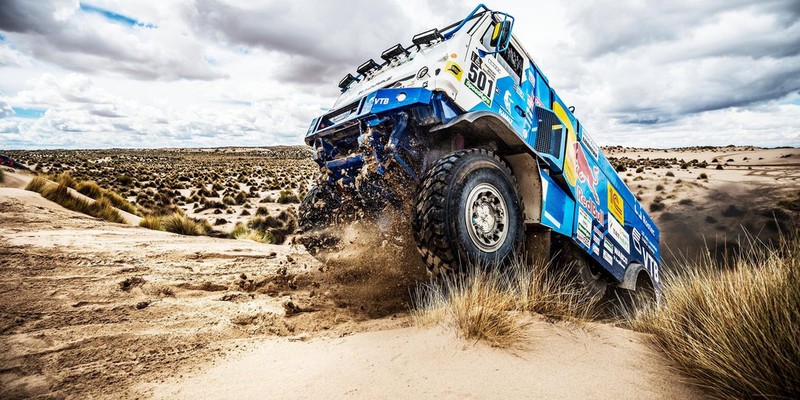
The 2019 Route
Correct me if I'm wrong, but as far as I know, this will be the first time in the history of the event that the race will be entirely held in one country, in Peru to be specific.
As you can see in the opening picture of this post the participants have to cover 5.000 kilometers in a total of 10 stages, and 70% of those 5.000 kilometers is sand. I believe the organizers mean that they have to cover 3.000 kilometers of sand with the "3000 SS" mentioned in that picture. However, when I calculate 70% of 5.000, that would mean 3.500 kilometers of sand. The correct number shall be somewhere in between I suppose.
Stage 1: Lima > Pisco, 7 January 2019
Lima will be the start and the finish of this year's race. The first stage takes the riders from Lima to Pisco, both cities are easily reachable by road and about 230 kilometers apart. The participants of the rally will, however, have to cross through the desert and will need to cover 331 kilometers to reach the finish.
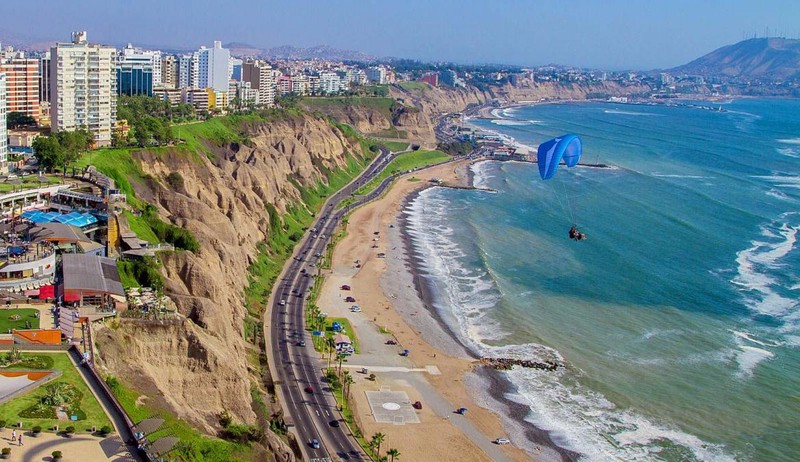
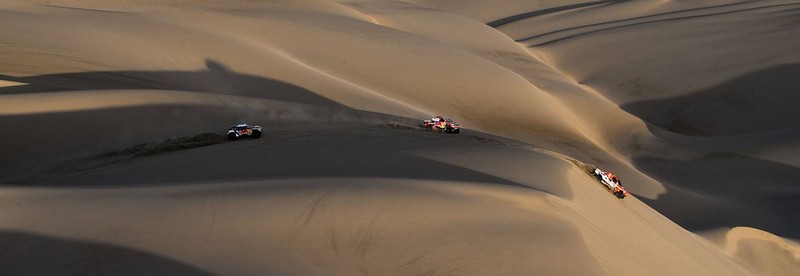
Stage 2: Pisco > San Juan de Marcona, 8 January 2019
The standard route between these two cities is 297 kilometers, but that would be too easy for our rally riders of course. The finish line in San Juan de Marcona will only be reached after covering 553 kilometers off-road. Whereas normally the motorbikes and quads start first, this stage is going to be special, as the cars will start first. You might be wondering why that is special, as it may not seem that much of a difference at first. This will take a very good navigator as a partner for the drivers, as they cannot count on the racing tracks the motorbikes and quads normally leave behind them. Navigational mistakes can result in hours of delays, something that the riders cannot use in such situations.

Stage 3: San Juan de Marcona > Arequipa, 9 January 2019
Instead of 568 kilometers, the Dakar Rally riders will cover 798 kilometers to reach Arequipa. Large parts of this stage's track exist of dried mud or clay roads. This time the motorbikes and quads start first again, followed by the cars, SxS vehicles and lastly the trucks. Like in the previous two stages the participants start one after the other, as in a time trial, with approximately a minute between the start of each next driver.
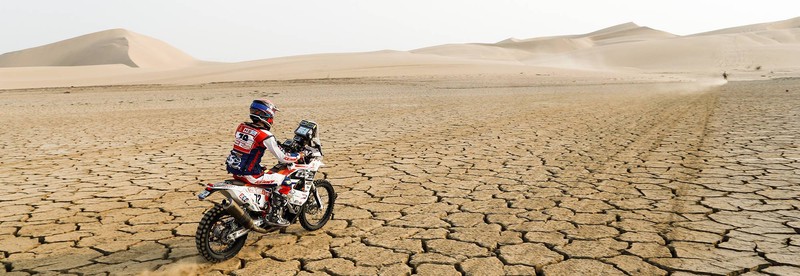
Stage 4: Arequipa > Tacna/Moquegua, 10 January 2019
This will be the first stage in which the motorbikes and quads have a different route to follow, stage 5 will be the other stage where that is the case. The cars, SxS vehicles, and the trucks will cover 664 kilometers to a place called Tacna. The motorbikes and quads, however, will have a shorter distance to cover, only 511 kilometers towards Moquegua. This is mainly due to the sleeping abilities overnight, as both locations can simply not accommodate that many people at the same time.
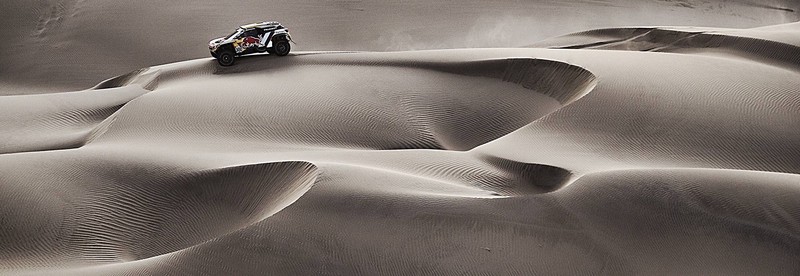
Stage 5: Tacna/Moquegua > Arequipa, 11 January 2019
In this stage, they go back to Arequipa, where they came from yesterday, but the route will be different. This time the cars, SxS vehicles and trucks will need 714 kilometers to cover before they reach the finish line. The motorbikes and quads will need to cover up a bit extra for the fewer kilometers they covered in stage 4, for them it is 776 kilometers in this fifth stage. What makes this stage special is that all participants will start at the same time, in a so-called mass-start. The first one to reach the finish will therefore then also be the stage winner.
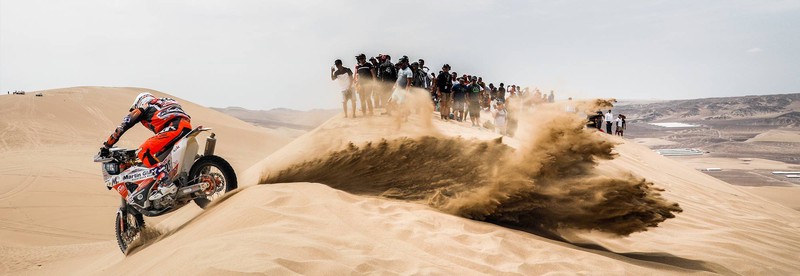
Rest Day in Arequipa, 12 January 2019
If you were wondering if there would be a rest day, then the answer is "yes", there will be one on the 12th of January in the city of Arequipa. The riders will have the time to get some quiet time before they continue with the second part of the race. Some people will need to use this time to repair their vehicles and others might actually not like the rest day, simply because they will lose the adrenaline and racing vibe. Those are the ones who have a harder time to be back in shape the next day, and who might lose some positions in the final part of the competition.

Stage 6: Arequipa > San Juan de Marcona, 13 January 2019
As we have to go back to Lima from here, the riders will have to go the same way as where they came from just a couple of days ago. Stage 6 exists of 838 long kilometers, it's the longest stage of the competition this year and will be dreadful for those not coming out of the rest day in shape. This is the moment where the fitness of the teams is going to be taking its toll as well. Good rankings can be lost, or previously lost time can easily be made up when having a good day during this stage.

Stage 7: San Juan de Marcona > San Juan de Marcona, 14 January 2019
Start and finish for this stage will be both in San Juan de Marcona, but not before the riders have crossed 387 kilometers of extremely tough to cover sand dunes. In this extremely rural area, you can get lost very easily. A good working GPS and navigator will be vital, and of course, it's important to carry around some toolkit to repair your equipment in case of technical trouble, as there will be not many people around that will be able to help.
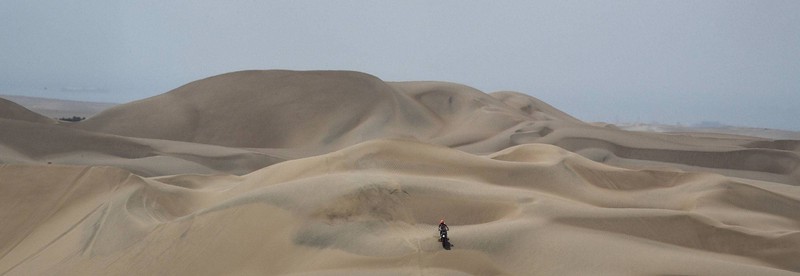
Stage 8: San Juan de Marcona > Pisco, 15 January 2019
In stage 8 the riders will head back to Pisco through the coastal dunes of Peru, covering 575 kilometers. This stage will also be a special one due to the unique start of the race in San Juan de Marcona. The first starting line will have the top 10 in each category lined up at the front of the race, whereas all the others will start behind. This will be total chaos with bikes, trucks, quads, cars and SxS vehicles all competing at the same time among each other. That must be a truly inspiring sight and will be great to experience, even if it's only from the television.
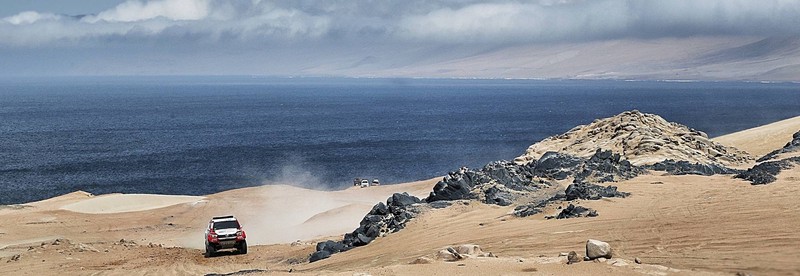
Stage 9: Pisco > Pisco, 16 January 2019
In stage 9 the riders will make a massive loop around Pisco, that covers a total of 409 kilometers. Some parts of the race will go over the beach of the city which will be giving us another bunch of amazing views if the competition itself wasn't already exciting enough. This race will also be a mass-start, as explained in stage 5.

Stage 10: Pisco > Lima, 17 January 2019
That's it, only 359 kilometers to go back to Lima, where it all started. The riders will start one by one and will therefore also arrive one by one, most likely in a central location somewhere in the city of Lima, so that a lot of fans can cheer for the winners whenever they receive their trophies for the stage win, but also for the overall rankings.

Comments